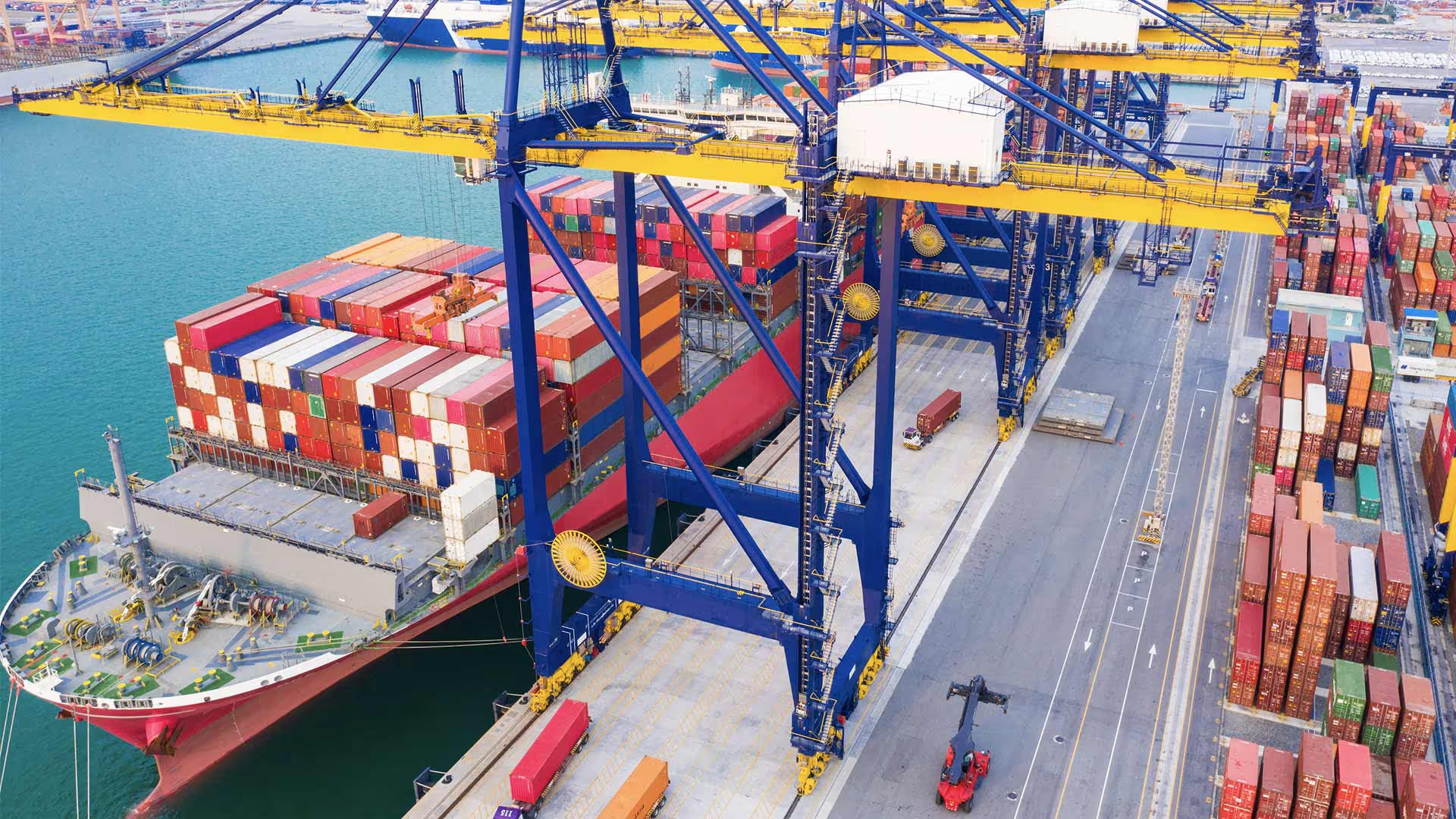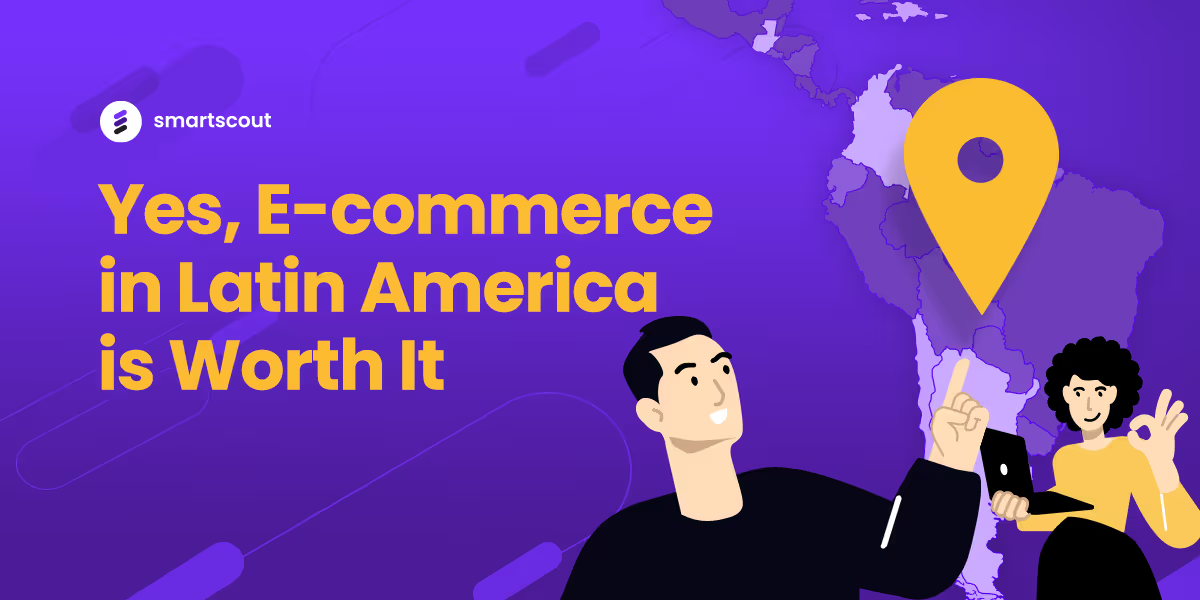
There’s an uphill growth for E-commerce in Latin America (LATAM). In January 2022, eCommerce contributed 11 percent of retail in various LATAM nations. This trend will only evolve more in the region.
E-commerce in Latin America is expected to grow 25 percent between 2021 and 2025. And while the fastest-growing LATAM nations for e-commerce are Brazil, Argentina, and Mexico, there is still growth in Chile, Colombia, and Peru.
What does this mean for international businesses? Expanding to LATAM should be your next goal. However, online sellers should better understand the opportunities, benefits, challenges, and marketplaces available.
The Opportunity for E-commerce in Latin America
There are many reasons Latin America is attractive for international businesses. First off, LATAM’s market is expanding, with economic improvements and long-standing valuations.
Brazil, in particular, is an economi c powerhouse. It has the biggest market in LATAM and is one of the most promising countries for expansion. Plus, certain countries can also take advantage of nearshoring.
Nearshoring is moving business operations to a nearby country, making it a cost-effective global expansion strategy. For instance, U.S. and Canadian businesses can benefit from more flexibility and convenience expanding to LATAM, with fewer supply chain interruptions.
The Internet has also made doing business easier in Latin America. Around 75 percent of people throughout South America have internet access, making it simpler to shop online, hire remotely, and conduct business.
Benefits of Expanding to Latin America
The main benefits of expanding to LATAM include existing trade ties, more consumer growth, less competition, and access to a quality talent pool.
But that’s only the tip of the iceberg. Here’s why businesses should add E-commerce in Latin America to their global expansion strategy.
Strong Trade Ties
LATAM countries already have strong trade ties, specifically with the US. Approximately 71 percent of U.S. trade is with Mexico, making this LATAM powerhouse an effective first country for global expansion. Canada has also deepened its relationships with Latin America.
Trade between the EU and Latin America has increased by 39 percent over the last decade. China also has a growing influence in LATAM.
Since the region has existing trade relations, this poses a great opportunity for E-commerce in Latin America. Plus, internional businesses may experience faster growth in these countries with a smoother supply chain.
Consumer Growth

The LATAM market boasts more than 300 million digital buyers and will grow 20 percent more by 2027.
Because of this consumer growth, the GDP is increasing in each country:
- Brazil - 1.6 billion USD
- Mexico - 1.2 billion USD
- Argentina - 486 billion USD
- Chile - 316 billion USD
Since E-commerce in Latin America attracts digital buyers and boasts an increasing GDP, expanding to LATAM can result in serious growth.
Less Competition
Direct selling is the main E-commerce channel in Latin America, specifically in the personal care and beauty markets. This means international sellers have little influence in this market.
With less competition and a growing consumer base, foreign E-commerce shops will have a serious advantage. But that means you shouldn’t approach LATAM without a plan.
Start your expansion with one country, focusing on regions that are geographically close by, and have existing strong trade relations. You can also focus on a region where your or your niche is more popular.
Talent Pool
Around 156 percent of international businesses want to hire more talent from Latin America. That’s because the region offers diverse roles and highly educated workers.
Plus, Latin American workers are typically cheaper than employees in the U.S. and Canada, since the cost of living is lower in these nations. For example, Colombia has been rated as one of the cheapest countries in the world.
Businesses still need to know legislation, regulations, and business culture when hiring or outsourcing Latin American workers, however.
Challenges When Expanding to E-commerce in Latin America
Before expanding to Latin America, it’s important to address potential issues you may run into. This includes a lack of infrastructure and language barriers.
Infrastructure

Latin America’s infrastructure isn’t favorable. The LATAM and Caribbean regions only invest 3 percent of their GDP in infrastructure, not meeting the needs and competitiveness to spur growth.
LATAM also falls short in transportation, specifically with the low road density. Therefore, ocean and air travel is the main method of transportation for goods and services.
Telecommunications is another struggle that businesses may face. Though most individuals in LATAM have internet access, there are still connectivity issues in the region. Fortunately, numerous companies are improving these issues, but businesses may still struggle to reach their entire audience when expanding to Latin America.
Language Barriers
Spanish is the official language in most Latin American countries. The exception is Brazil, where 201 million people speak Portuguese as its first language.
This can pose an issue for English-speaking countries expanding to Latin America. There’s no guarantee individuals in these regions speak English. Note, however, that Argentina has the best level of English, while Mexico has the lowest.
Regardless of the country you’re selling in, always translate your product descriptions into the native language and offer customer service in their mother tongue.
Amazon vs Mercado Libre
The two dominating marketplaces for E-commerce in Latin America are Amazon and Mercado Libre. Should you sell in one or both marketplaces?
Selling on Amazon Latin America
Amazon is the second-biggest online marketplace in LATAM. Consumers in Brazil and Mexico use Amazon more compared to other LATAM nations.
Though Amazon is most dominant in the U.S. and Europe, there are still benefits of expanding to Amazon in Latin America.
Becoming an Amazon international seller is easy. All sellers need is an American Unified Account to sell in Brazil and Mexico.
When selling in Latin America on Amazon, you can list your prices in the currency of your choice, and Amazon will auto-convert it for you.
As with all global marketplaces, Amazon will take a percentage of your sale for each item sold. They will also charge extra for using certain services such as Amazon FBA.
Selling on Mercado Libre
Mercado Libre is the leader in E-commerce in Latin America, and is experiencing explosive growth. In 2022, its sales rose by 21.5 percent.
Sellers have a growing influence in Mercado Libre. The number of sellers increases by 23 percent almost every year.
Selling in Mercado Libre is easier than you think. To sign up as an international seller, all you need to do is sign up for their cross-border selling program. You can price your products in USD, and listing your products is free. The marketplace will take a commission per sale (percentages vary by region).
Mercado Libre offers a wide range of products on its user-friendly platform. That said, it takes a lot of effort to gain an audience.
Mercado Libre has a hierarchy for sellers based on the number of sales and overall selling experience. For example, when you reach MercadoLeader status, you can offer free shipping, and your listings receive more exposure.
Mercado Libre also offers benefits that Amazon doesn’t boast. For example, it’s difficult to ship in Brazil since specific information is required from sellers. However, Mercado Libre (or Mercado Livre, for the Brazilian website) offers a fulfillment option in Brazil through their Mercado Envios program, making cross-border E-commerce simpler in the nation.
Selling on Both Marketplaces
There are benefits of selling on both platforms when expanding to Latin America.
Amazon International and Mercado Libre offer many similarities and the same advantages. For example, Amazon and Mercado Libre act as third-party platforms, offering a platform where users can shop and pay for their goods.
Sellers can set up an independent shop on both platforms, and there are fulfillment options on Amazon (FBA) and Mercado Libre (Mercado Envios). Plus, both marketplaces offer advertising to increase your audience and sales.
Selling as an international store is easy–you can use an existing Amazon Seller account and sign up for Mercado Libre’s Cross-Border Trade Program.
Although language barriers can be an issue, both marketplaces offer language translation tools and customer service in the native language.
Mercado Libre and Amazon will deliver payments to your bank account, though Mercado Libre also offers Payoneer.
Take Advantage of E-commerce in Latin America
Using global E-commerce is a simple way to attract a wider audience and increase your sales. One market that sellers should expand to is Latin America.
The LATAM market is attractive for sellers because of strong trade ties, more consumer growth, and less competition. And many international businesses also enjoy hiring within the region, due to its wide talent pool and low salaries.
There are two main E-commerce marketplaces in the LATAM region: Amazon and Mercado Libre. While some businesses may choose one marketplace over the other, it’s recommended that businesses take advantage of both.
Sellers can sign up for both platforms independently, or use global E-commerce solutions to make the expansion process seamless.











